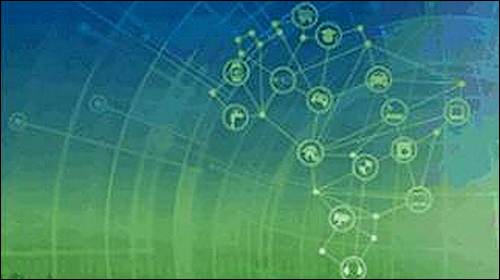Brazil’s federal government has been developing a national Internet of Things (IoT) plan since December 2016. The initiative began with the National Bank for Economic and Social Development (BNDES) and the Ministry of Science Technology Innovation and Culture (MCTIC), and involves the McKinsey & Co. consortium, the CPqD Foundation and Pereira Neto and Macedo Advogados (PNM). More information is available here.
The first results of the R17 million ($5.01 million) investment have been made public. The results, along with five lessons learned, were published in a report titled “Internet of Things: An Action Plan for Brazil.”

Focused on providing an analysis of good international practices, the benchmark document of initiatives and public policies suggests ways in which Internet of Things technologies could be developed in Brazil. The report sums up the first portion of the study. Supported by the BNDES Project Structuring Fund (FEP) and conducted by the bank in partnership with MCTIC, the study is expected to guide the Brazilian government in the formulation of policies for the development of IoT solutions.
The work is an effort to identify trends in what is viewed as a relatively new phenomenon. The group believes that most IoT initiatives in Brazil began just four years ago. However, those who follow RFID Journal Brazil know that the industry’s initial steps actually go back more than a decade, when the first initiatives with RFID were documented by Hewlett-Packard at its printer factory in Sorocaba.
In an attempt to understand what is happening in Brazil and what the main public policy trends are throughout the world, the study’s authors have examined what has been done by governments within 12 selected regions, grouped according to three criteria: prominent position in the Internet of Things, the strong role of the IoT and challenges similar to Brazil. Based on their analysis of the IoT ecosystems in these regions, the authors offered five main lessons in their report.
Lesson 1: State Involvement Can Be Summarized in Three Models
• Active role in the IoT: Governments actively participate in the development of the IoT sector through investments, selection of priority areas, creation of associations and alliances, regulatory initiatives and international partnerships. The actions are usually consolidated in a national plan.
• Ecosystem formation: Governments focus on creating a supportive environment by bringing together and coordinating businesses, development agencies, startups and universities. The State’s direct investments in the IoT tend to be more limited compared to those of countries that take an active role.
• Policymaker and investor in focus areas: Governments are dedicated to establishing specific guidelines, investing in selected areas, disseminating best practices, and making competitiveness and opening markets possible.
Lesson 2: Governance Stimulates the Formation of an Adequate Environment
• Structured model with specific associations or IoT alliances formed by the public and private sectors: Most countries in which the State plays an active role have adopted robust models of governance, such as associations, alliances or consortiums bringing together the public and private sectors, formed by executive councils and advisory bodies, as well as working groups or thematic committees.
• Ecosystem formation: There are countries that have a leading position in the IoT despite adopting more decentralized models, as they already have an innovative ecosystem, such as incubators and the university consortium in the United Kingdom, or coordination actions focused on selected verticals in the United States.
Lesson 3: Governments Seek to Create Appropriate Ecosystems and Reduce Innovation Risk
• Making investments: Most leading governments are investing significantly in the Internet of Things.
• Cluster training: Startups and other companies in specific areas of cities should be gathered to exchange experience and conduct new business.
• Encouraging SMEs and startups: An entrepreneurial culture should be fostered by reducing bureaucracy and taxes, and by spreading the benefits of entrepreneurship.
• Public procurement: The demand for innovation by the public sector should be used to encourage innovation and leverage IoT companies.
Lesson 4: It Is Necessary to Invest in the Formation of Human Resources
• The IoT favors job creation.
• Public policies should be linked in order to increase capacity, and to offer employment opportunities.
• Information technology, computer skills and programming should be introduced starting in elementary school.
• Universities and industries should be connected.
• Governments must take steps to open and expand channels of cooperation between industries and universities.
• Industry events should be promoted.
• Workshops, conferences and training on specific topics related to the IoT should be organized.
Lesson 5: Key Themes Need to Be Regulated, But There’s No Consensus on How to Do So
• Standardization: One of the IoT’s biggest challenges is to enable devices to communicate with each other, regardless of who made them or where they were manufactured. Some countries encourage open standards, while others adopt global or market-defined standards.
• Connectivity: The large number of devices will require a complex infrastructure. Some governments develop local infrastructure (the European Union, Japan and Korea), while others have worked for the formation of global platforms (the United Kingdom, China and Singapore).
• Privacy and security: In all countries studied, there is a consensus that it is necessary to create mechanisms to prevent unauthorized access, the misuse of personal data and attacks on systems. However, governments have still advanced at different rates in passing laws and in creating institutions responsible for their enforcement.
The full report can be downloaded from the BNDES website.

